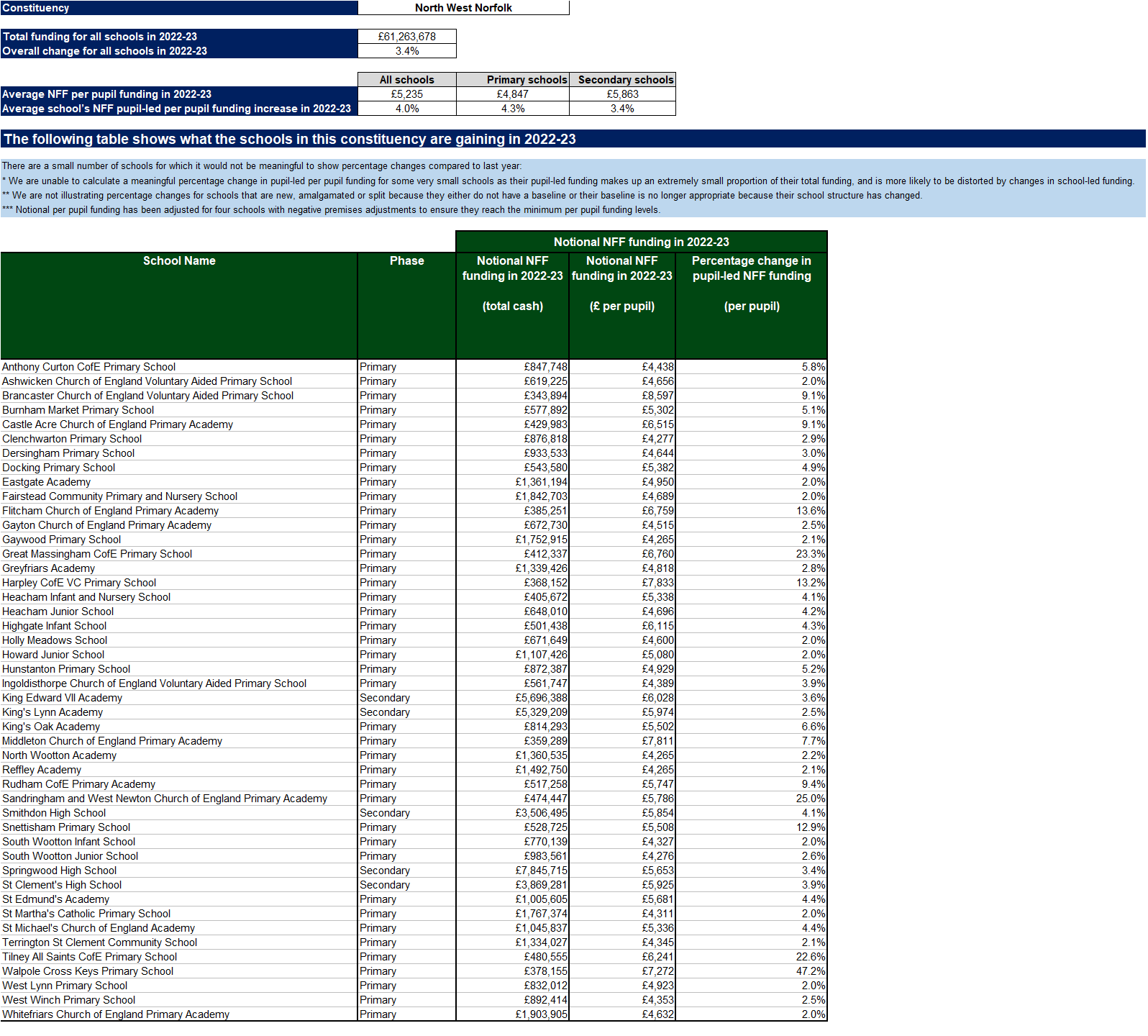
Schools in North West Norfolk will receive an average increase in per pupil funding of 4 per cent in 2022-23 as part of the largest cash increase in school funding in a decade, with 4.3 per cent increase for primary and 3.4 per cent for secondary schools.
This government is investing a total of £14.4 billion more in education over three years: core school funding increased by £2.6 billion in 2020-21, and is increasing by £4.8 billion and £7.1 billion in 2021-22 and 2022-23 respectively, compared to 2019-20. The formula will distribute this funding based on schools’ and pupils’ needs and characteristics. The main features in 2022-23 are:
• The core factors in the formula (such as basic funding that every pupil attracts, and funding for additional needs such as deprivation) will increase by 3%.
• The funding floor will ensure that every school is allocated at least 2% more pupil-led funding per pupil compared to its 2021-22 allocation.
• The minimum per pupil funding levels will also increase by 2%, compared to 2021-22. This will mean that, next year, every primary school will receive at least £4,265 per pupil, and every secondary school at least £5,525.
• Support for small and remote schools (through the “sparsity” factor in the formula) will receive a further increase. In 2022-23 the additional funding that such schools can attract is rising to up to £55,000 for primary schools, and up to £80,000 for secondary schools – in both cases, a £10,000 increase from 2021-22.
High needs funding, to support children with special educational needs and disabilities, is increasing by £780 million, or 9.6%, in 2022-23. This follows the £1.5 billion increase over the previous two years, and brings the total high needs budget to £8.9 billion, an increase of over a third since 2019-20.


